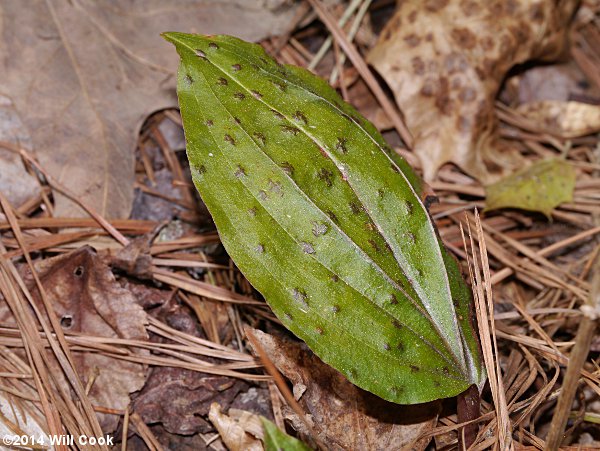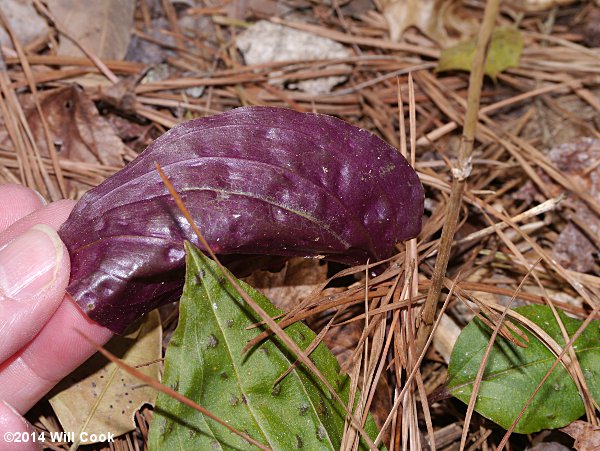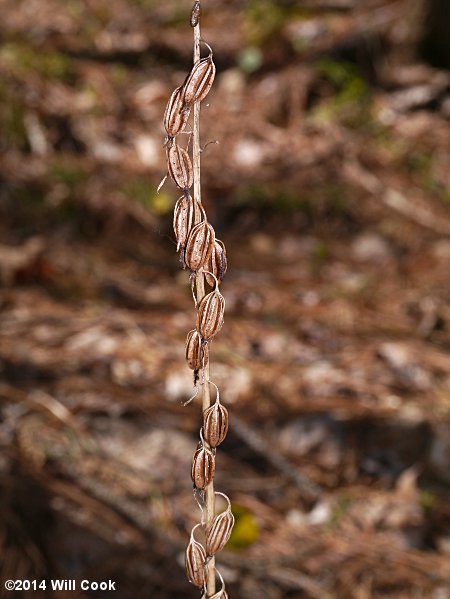Cranefly Orchid - Tipularia discolor (Pursh) Nuttall

Tipularia is a common orchid of the forest floor. It is perhaps the most commonly observed orchid in North Carolina, slightly ahead of Rattlesnake-plantain (Goodyera pubescens). In winter and spring look for the distinctive ridged and spotted pale green leaves.

If you tip the leaf over, it's a nice purple color beneath. This makes it easy to remember the name "Tip"ularia. This is just a coincidence, of course. The genus was actually named for the fancied resemblance of the flowers to craneflies (Tipulidae), which also led to the common name. The specific epithet discolor refers to the different colors of the underside and upperside of the leaf.

Leaves die back in late spring, before the flowers appear. At left is an old fruiting stalk with dry capsules.